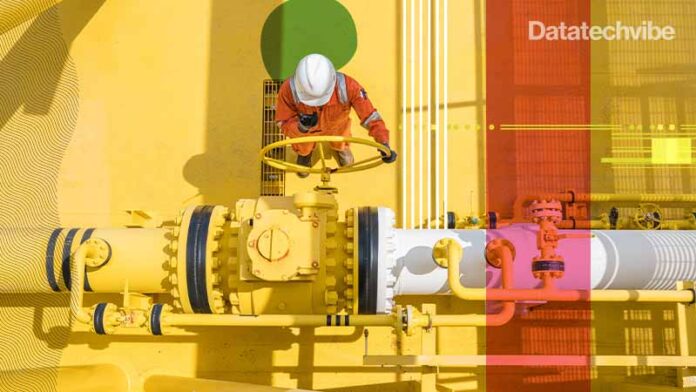What is the true cost of downtime? According to a recent report, the average number of hours lost due to downtime is highest in the Oil and Gas sector, calculated at about 32 hours per facility each month.

It is a safety-critical industry. That means that at the first sign of a potential safety problem, production halts. Every year, shutdowns in this sector cost each facility $220,000 per hour, amounting to $84 million per facility each year.
Predictive maintenance presents a huge opportunity to address the challenges of the volatile oil market by reducing costs associated with unplanned downtime. Here, gas companies can leverage IIoT-enabled technology such as sensor data and run predictive analytics for real-time equipment inspection. The impact it can have on the bottom line is indisputable. However, there are a couple of concerns. The oil and gas industry can no longer make do with on-premise data storage because of the large volumes of data it generates. According to Deloitte’s digital maturity index, oil & gas lags behind other sectors. Traditionally, this industry has relied heavily on its own telecommunication network. The communications with vessels or sites are made via satellite links that are expensive and difficult to manage. Adding to woes, these facilities are usually set up in remote locations. The oil industry needs to share data from field instrumentation, contractors, regulators, and other stakeholders in almost real-time, which makes the right latency threshold crucial. According to a Cisco report, a typical offshore operation generates around 1-2 TB of data daily. With a satellite connection, it would take around 12 days to transfer one day’s data.
This is where 5G and edge computing come to the rescue. While 5G has enabled field telecommunication to transport high volume data, edge computing can be leveraged so that AI and ML models can run real-time analysis on this data. With edge computing, centralised applications can run at the edge of the network or on devices to reduce latency. Think of it as performing computation close to the data source, i.e., sensors, SCADA, surface and sub-surface facilities. The needs of this industry include delivering relevant data to processes like exploration, production and downstream. Processing data through a low-latency framework allows business decisions in real-time.
Edge computing is widely used in manufacturing, automotive, sports and healthcare. As per a PWC report, 70 per cent of the surveyed 200 oil companies are in the initial stages of their digital transformation. Edge computing is a critical enabler that is pushing companies ahead with a competitive advantage.
Energy Transition in the Middle East
In October, 2020, the Abu Dhabi National Oil Company (ADNOC) announced the launch of AIQ, its Artificial Intelligence (AI) joint venture company with Group 42 (G42), an Abu Dhabi-based AI and cloud computing company. AIQ focused on developing and commercialising AI products and applications for the oil and gas industry. ADNOC’s partnership with G42 was one of the first digital transformation initiatives to embed cutting-edge technology across its entire value chain. Under this umbrella, the Panorama Digital Command Center and Thamama Subsurface Collaboration Center use big data modelling tools and computer vision technologies to feed predictive maintenance. They also use blockchain for hydrocarbon accounting.
Economies in the Middle East are still heavily dependent on oil production. In response, there has been strong adoption of technologies to solve business challenges. For example, in August 2021, Aramco deployed edge-powered computer vision solutions built on the FogHorn Lightning Edge AI platform at multiple sites. The solution is slated to enhance safety, provide proactive monitoring for equipment failure, and enable automation of drilling equipment and processes.
In this project, video cameras function as sensors to offer visibility on a multitude of processes that other sensors and control data do not capture. These are high-bandwidth sensors. Edge computing helps make sure it is a cost-effective process and one which doesn’t falter in low connectivity zones.
“Camera-based edge analytics enables automation of remote energy facilities and support our IoT edge infrastructure. Edge analytics streamline operations and provide staff with mission-critical information to make time-sensitive decisions,” said Mahdi Adel, CEO of Aramco Ventures.
Conclusion
The use of SCADA (Supervisory Control and DATA Acquisition), considered the predecessor of the modern IIoT) is recognised as both an asset and a liability for adopting edge, according to a Frost & Sullivan report. SCADA provides the necessary framework of edge, but its antiquated architecture is a bottleneck for seamless network expansion from core to edge. But leaders need not pick sides. Edge computing allows companies to distribute the flexibility and simplicity of cloud computing across a large number of locations. A common, horizontal platform—from the core to the edge—not only provides a consistent app development and operations experience but also acts as a bridge to other proprietary systems (SCADA),” said Ishu Verma of Red Hat, an IBM subsidiary software company.
However, the extent of cybersecurity risks is still being understood. Attacks on critical infrastructure have risen significantly over the past year, so this is a valid concern for enterprise leaders. As more intelligent electronic devices (IEDs) are deployed to optimise efficiency, industrial control systems (ICSs) become a vulnerability. The threat extends beyond proprietary data, leaders are worried about mission-critical operational technology (OT) assets and equipment falling into the wrong hands.
If you liked reading this, you might like our other stories
Edge Computing + Cloud Computing = Cloud Continuum?
At The Cutting-Edge: Top Edge Computing Companies To Watch









